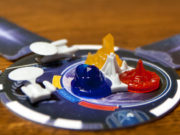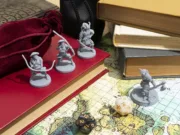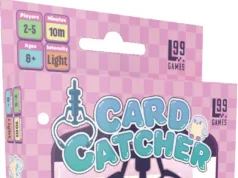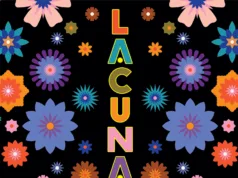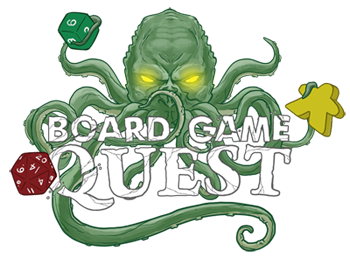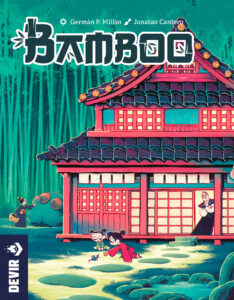 Bamboo, from designer Germán P. Millán and artist Jonatan Cantero, is the third game in the Kemushi Saga. The saga features titles Bitoku and Silk, and these games all share a fantasy universe with an Asian aesthetic. Bamboo is a return to a smaller box and the lighthearted artwork would make you think that this is more of a filler game than a design with depth.
Bamboo, from designer Germán P. Millán and artist Jonatan Cantero, is the third game in the Kemushi Saga. The saga features titles Bitoku and Silk, and these games all share a fantasy universe with an Asian aesthetic. Bamboo is a return to a smaller box and the lighthearted artwork would make you think that this is more of a filler game than a design with depth.
But is that true? Within the box is a densely packed set of components, all with publisher Devir’s signature care and consideration. And an action selection system that is truly unique. Why don’t we make an offering to the spirits of the forest and see if they will favor us with their blessings while we look closer.
Gameplay Overview:
Bamboo is about happiness. Sustaining livelihood and finding comfort. It’s about coexisting with the spirits. Players utilize the local bamboo forest to take one of four actions to gain coin or food, improve their home, or create balance. This is done by making offerings at the local temples to the forest spirits and then taking actions equal to how much incense is used. Each round has four phases and there are four rounds in total.

Players begin by drafting two extra bamboo pieces to add to their home. Each bamboo piece has an icon with one of the four actions on it and there is a star icon that represents a wildcard option. After the draft, phase one (spring) provides a stick of incense to add to their starting three pieces. They also choose a gift from the forest (bonus action) which is selected first by the start player and the remaining actions become available for the next in turn order.
Phase two (summer) finds players making offerings to the temples and using their saved-up bamboo to take actions. There are four rows of different colors of bamboo that relate to each spirit’s temple location. By selecting a red row with two bamboo pieces, players add their incense to the red temple. When players run out of incense, they must pass for the remainder of the round.
Whichever player has the most incense on a forest spirit gains their favor for the rest of the game. These spirits provide powers during certain phases before exhausting, but they can be refreshed by spending coin. The trick with gaining a forest spirit is that incense is stacked vertically and in the case of a tie, the tied player who stacked most recently gains the spirit. Spirits grant two happiness points per unique spirit (there are seven types in total) at the end of the game.
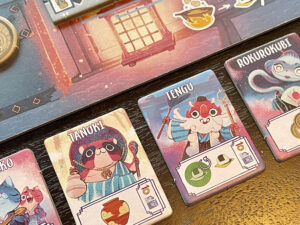
The four main actions are summed up here:
1. Balance – Obtain a contract and/or score a contract. You can take this action twice.
2. Improve Home – Choose a home tile from the market in one of four types and with varying comfort values. Pay and receive points equal to the payment.
3. Fund – Gain two coins.
4. Cook – Take a food token from the main board. These come in three values (1, 2, or 3).
Most points are scored via home tiles and balance contracts. Each player board features a tile placement area split into three sections—left, middle, right. Balance contracts ask players to make placements based on these sections as well as combined comfort values from home tiles. During final scoring, players are penalized if they do not balance their comfort values between the left and right sections.
After taking actions, players place their bamboo pieces into one of four forest columns (max two per column) and push the bamboo stalks up, thus gaining the pieces that emerge at the top. This simulates cutting the bamboo. These come back to the player board to be utilized in the future.
In the third phase (autumn), spirits are gained by those who won a majority. And in the fourth phase (winter), the player’s family must be fed based on how many home tiles they have on their board. If unable to meet the hunger needs, players lose one point per value they cannot contribute. It’s also worth noting that the Balance and Home tiles in the bottom row are removed from the game and are refreshed for the next round.

Game Experience:
If anyone caught my top ten from last year, then it’s no surprise that I’m reviewing another Devir release. They continue to provide quality systems with unique themes. The bamboo decision space here is excellent. Not only do you get to determine your own future based on how you decide to combine your bamboo colors, but you also get an option of four columns to review for potential future actions. It’s simple and elegant.
Another strong highlight here is the mood. Players are gaining happiness and making offerings at the temple and feeding their families and balancing their homes for comfort. There’s a cozy nature to this design, further highlighted by the artwork which provides a joyful and serene space to quell any tensions. The forest spirits all look happy, and each player board features a fun family portrait to provide a little flavor. One is a panda family for some reason, while the rest are human.
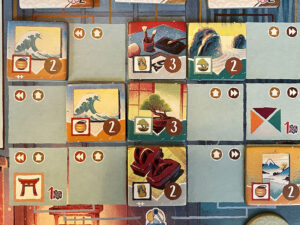
The comfort balancing mechanism is also a standout. Trying to complete balance contracts while also being mindful of placement provides a nice layer and becomes another puzzle to ponder. There is an advanced side of each player board that features tile specific locations that must be covered or points will be lost during final scoring. This also opens the decision space of either completing a high-value contract or shifting into maintaining balance on occasion.
But not everything is happiness with this design. Bamboo let me down in several ways. The first being the iconography. As this is a small game, certain areas find a way to hide the more important information in lieu of art. The home tiles, comprised of the four types, hide their type icon in the bottom corner while showcasing artwork that relates to the type (as in a wave painting for the decoration type, which is a lantern icon). This provides a fun look at your home when the game is over, but it isn’t as functional.
Another area where this suffers is on the player boards where tile location spaces feature tiny arrows for their alignment, while all these spaces feature the “home” icon which is unnecessary. Why they couldn’t utilize the entire area (or make the icons larger) for spaces that would be filled up with home tiles is beyond me.
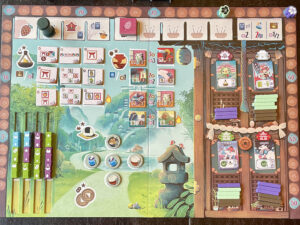
A few design choices also started to bother me. Like its saga brethren Bitoku, Bamboo features a pointless phase and round tracker that take up too much space on the board. A small player aid and keeping next round incense next to player boards would’ve been just fine. Also, the turn arc sees players making offerings at the temples, but this is on the right side of the board. This may be leaning into its Japanese influences (reading right to left), but it feels awkward and an adjustment to the left could’ve matched the flow better.
My final critique is an oversight. The forest spirit tiles all activate at specific times during a round. Yet none of these tiles feature information that informs you of this activation window. As such, the rulebook must be kept close by, and we found it necessary to arrange the spirits below our board in such a way that indicated the season when they could be used.
Final Thoughts:
Even with the shortcomings listed above, Bamboo wasn’t hard to get to the table and dig into. Over time though, it slowly started to show its cracks and I couldn’t get over things that should’ve been considered during playtesting. This remains a unique release and is well suited for lighter gamers who want a different puzzle to satiate them. It also features a nice change of pace by highlighting happiness and still creating a competitive experience. The advanced variant is highly recommended for those who come from heavier games though. Devir continues to keep me engaged, but this title didn’t quite live up to expectations.
Final Score: 3 stars – While cute and featuring some great ideas, Bamboo did not fill me with enough happiness in the end.
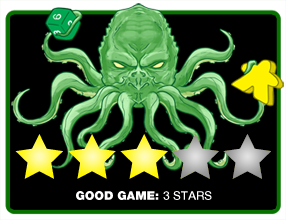 Hits:
Hits:
• Bamboo action system
• Comfort balancing
• Delightful artwork
Misses:
• Iconography woes
• Odd design choices
• Spirit phase info missing



